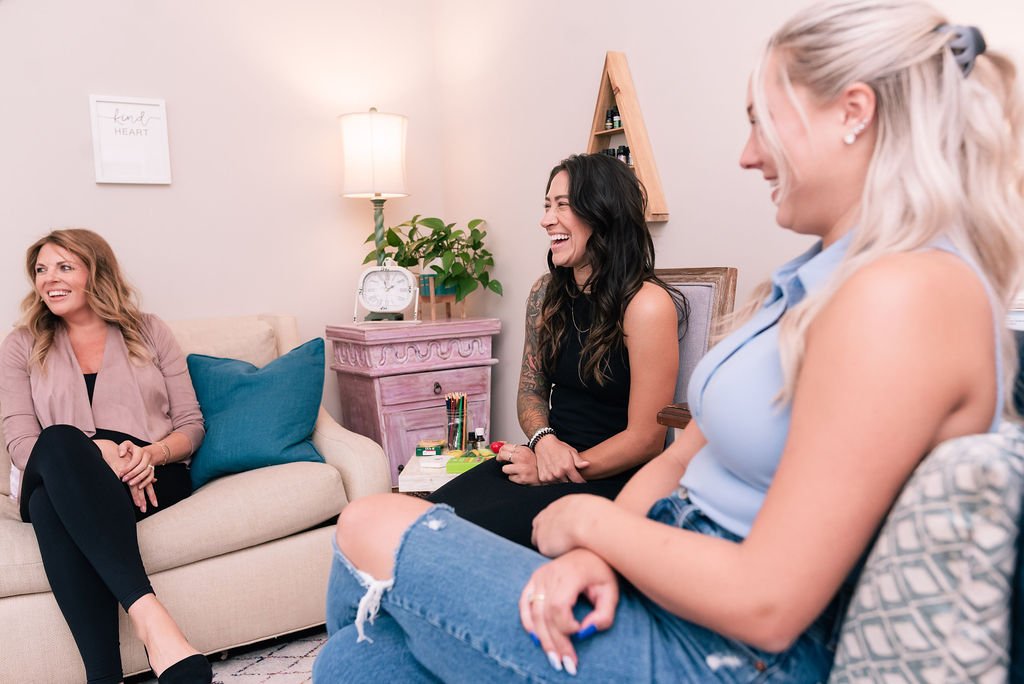Understanding Codependency in Relationships and the Cycle That Fuels It
Codependency is a complex and often misunderstood dynamic in relationships. It’s a pattern where one person’s behavior is driven by the need to please or take care of someone else, to the detriment of their own well-being. This can happen in any type of relationship, whether it’s romantic, familial, friendships or work relationships. While the intention behind codependent behaviors often comes from a place of love or concern, over time this pattern can be unhealthy for both individuals involved.
Let’s dive into what codependency is, how it manifests in relationships, and the cyclical pattern that reinforces it.
What Is Codependency?
Codependency often appears in situations where one person is overly reliant on the other for emotional support, self-worth, or validation. One individual may give up their own needs, desires, and goals to cater to the other’s needs, while the other person may become emotionally dependent on the first for stability or care.
This dynamic can seem functional in the beginning because both individuals may feel needed or valued. However, over time, it can lead to an imbalance of power, resentment, and a lack of personal growth.
Signs of Codependency:
People-pleasing behavior: Constantly trying to make the other person happy, even at the expense of your own needs.
Low self-esteem: Feeling that your value is defined by how well you can take care of someone else.
Difficulty setting boundaries: Struggling to say no or stand up for yourself in fear of rejection or abandonment.
Lack of independence: Prioritizing the relationship above personal interests, hobbies, or self-care.
Feeling responsible for others’ emotions: Constantly trying to fix or solve the problems of the other person, even when it's not healthy for you to do so.
The Cycle of Codependency
The cycle of a codependent person typically follows a pattern that perpetuates unhealthy behaviors, often revolving around the need to please or "fix" others, while neglecting one's own needs and boundaries. This cycle can repeat itself in relationships, reinforcing feelings of worthlessness and self-sacrifice. Here’s a breakdown of what the cycle looks like for a codependent person:
1. Caretaking/People Pleasing/Rescuing
In an effort to feel “good enough,” the codependent person often takes on a caretaking role, feeling responsible for the emotional well-being, happiness, or success of others, even if it means sacrificing their own needs.
This can include excessive giving, trying to “fix” others, or over-functioning in the relationship to maintain a sense of control and stability.
In trying to help or "rescue" others, a codependent person might unintentionally enable unhealthy behaviors, such as addiction, irresponsibility, or manipulation, because they fear losing the relationship or being abandoned.
2. Overwhelm/Resentment/Persecution
Constantly putting others first without receiving much in return leads to feeling used, unappreciated and exhausted. These feelings are overwhelming and cause resentment, but the codependent person might suppress these feelings to avoid conflict or losing the relationship.
Because the codependent person fears conflict and abandonment, they often do not identify or express their needs in healthy ways and feel guilty or shameful in doing so.
They will sometimes persecute the other person (e.g. “how could you do this to me?”) but their guilt and shame is perceived as selfish and can lead them back into self-sacrificing behaviors, perpetuating the cycle.
3. Feeling Stuck/Victim/Dependent
The codependent person may feel trapped in the cycle, unable to break free because of their intense fear of being alone, rejected, or unloved. They may believe that their worth is tied solely to how much they give to others.
This dependence on external validation prevents them from developing a strong sense of self and autonomy.
They often end up feeling helpless and oppressed and completely at the mercy of others.
The codependent person feels some temporary relief when they "rescue" someone or solve a problem for someone else. This relief can reinforce the belief that their worth comes from taking care of others, continuing the cycle. However, the relief is usually short-lived, and the cycle begins anew, often more intense than before.
Why the Cycle Persists
The cycle of codependency persists because of the emotional rewards involved. Both people in the relationship get something out of it, even though it’s unhealthy. The caretaker feels validated by their role, and the person receiving care may feel secure, loved, or valued. Unfortunately, these rewards are short-term, and long-term emotional needs are not being addressed.
Codependency is likely learned from the person’s upbringing, often in families where emotional needs weren’t met in a healthy way. For example, if a child was raised in an environment where one parent was emotionally unavailable or abusive, they might learn to take care of others in an attempt to gain love or attention.
Breaking the Cycle of Codependency
While it can be difficult to break free from a codependent cycle, it is possible with awareness, effort, and support. Here are a few steps to start healing:
Acknowledge the Pattern: The first step is recognizing the cycle and acknowledging that it is unhealthy.
Set Boundaries: Learning how to set and enforce healthy boundaries is essential. This means recognizing when you are giving too much and when to say no to behaviors that aren’t serving your well-being.
Work on Self-Worth: Building a strong sense of self outside of the relationship is crucial. This can be done through therapy, self-care, hobbies, and connecting with supportive people who respect your boundaries.
Communicate Openly: Healthy communication is vital in any relationship. Talking openly about your needs, desires, and limitations can help both people understand each other better and create a more balanced dynamic.
Seek Professional Help: Therapy or counseling, both individually and as a couple, can be incredibly helpful in addressing codependency. A therapist can guide you through the process of healing and help both parties work toward healthier relationship patterns.
Conclusion
Codependency is a cycle that can entrap individuals in unhealthy dynamics, leaving both partners unfulfilled and emotionally drained. While it may feel comforting or necessary to care for someone at the expense of your own needs, true love and connection come from mutual respect, boundaries, and emotional independence.
If you recognize signs of codependency in your relationship, remember that healing is possible. By taking steps to understand and address these patterns, you can break free from the cycle and build healthier, more fulfilling relationships.
Resources
Are you feeling triggered and having a hard time figuring out why? Grab our self care check-in to better understand your triggers and how you can take better care of yourself.
Grab our FREE guide below to walk through the common codependent tendencies, where it comes from and why self-compassion is so important.
Grab our list of 9 telltale signs that you might be in a relationship with a narcissist.












